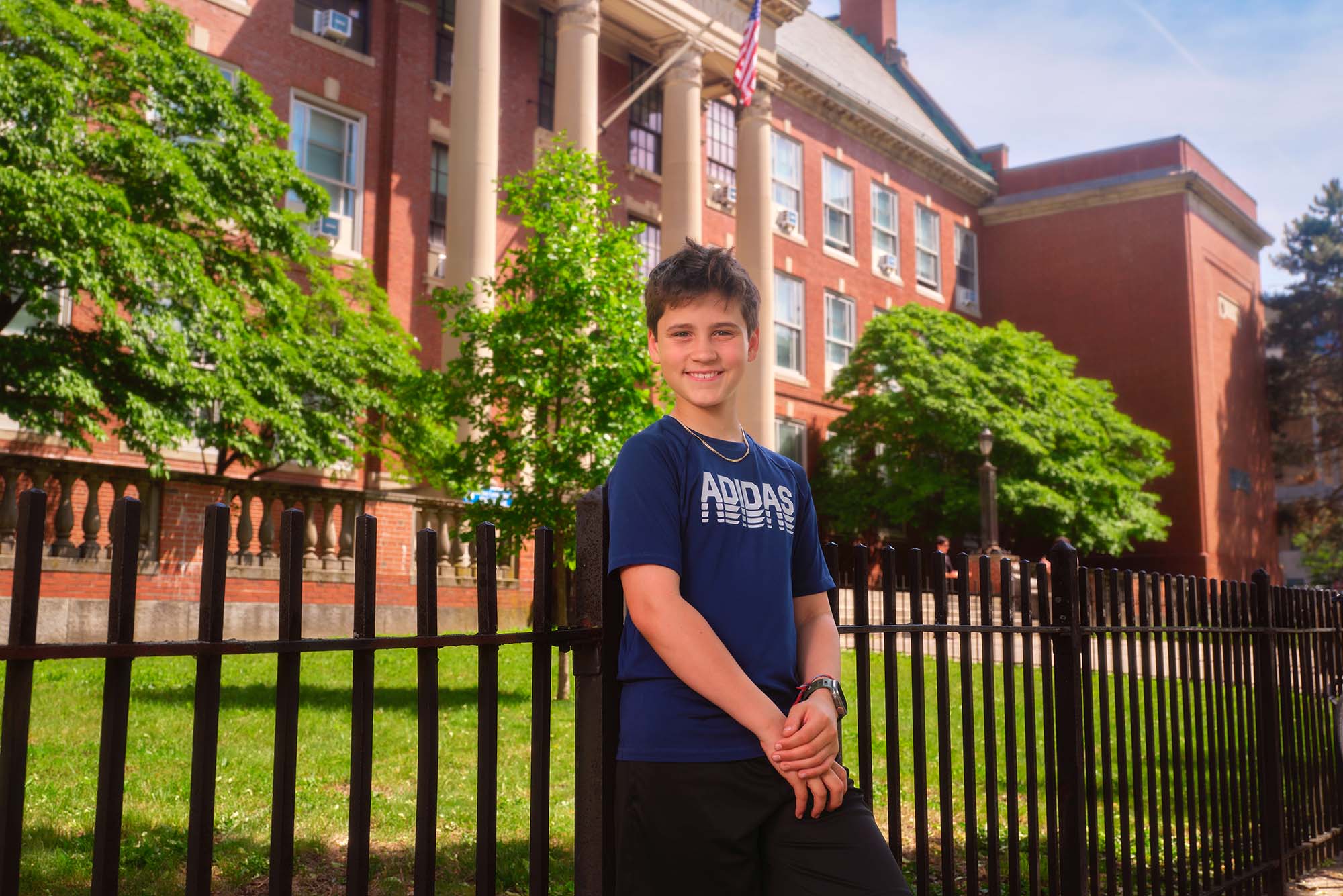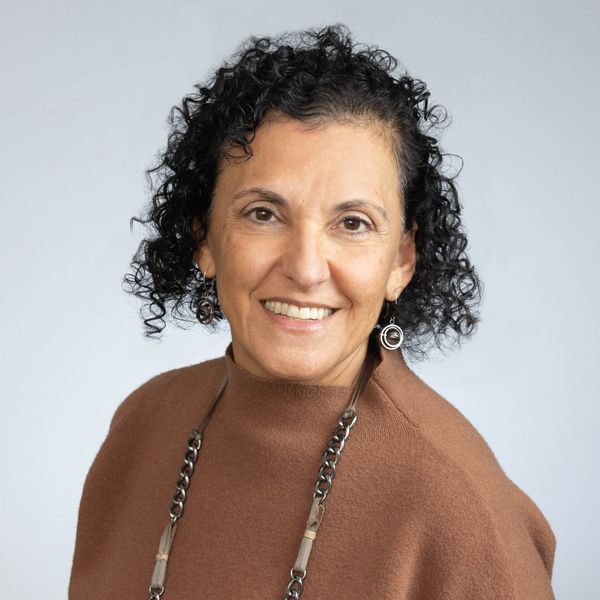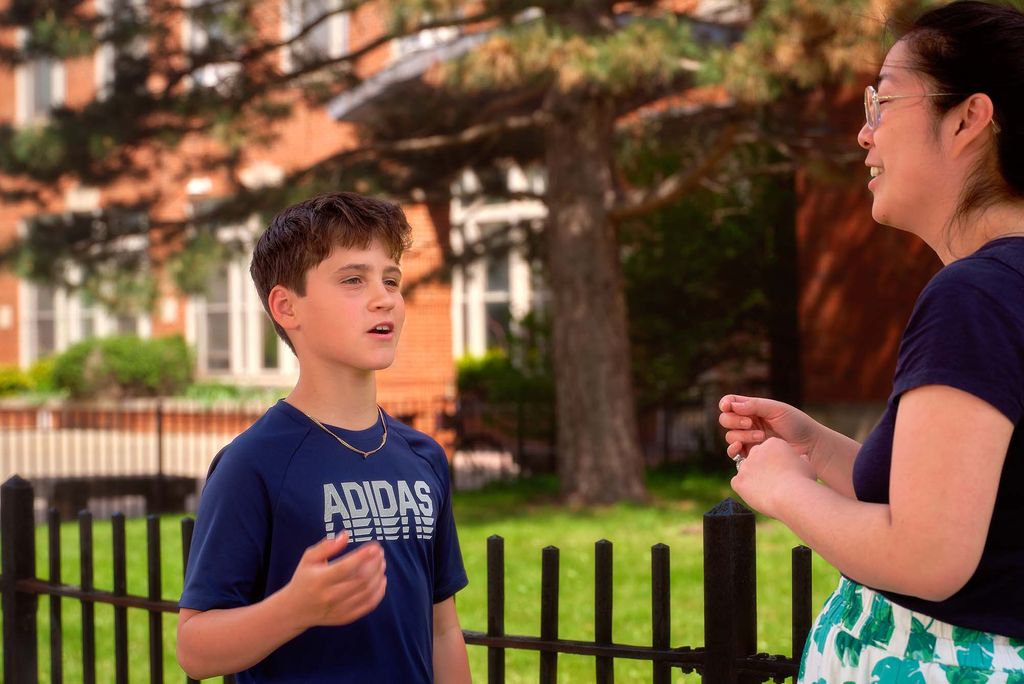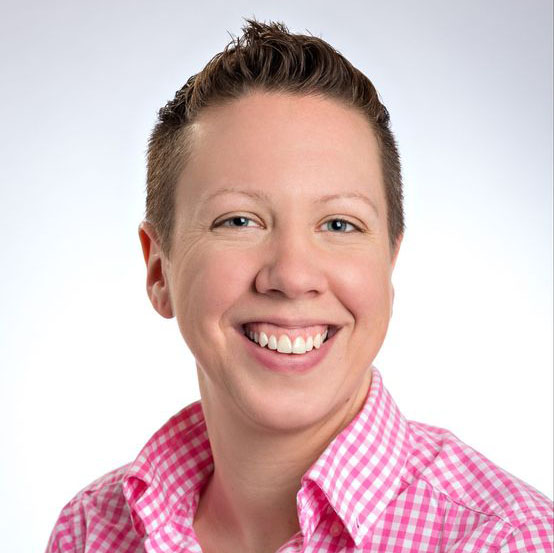The Power of the Middle School Years
It’s often considered an angsty, difficult time, but the Wheelock researchers who study early adolescence and these years know the stereotypes don’t hold up—middle school is a time of rich opportunity, they say.

Raoul (RJ) Rosenquist, a seventh grader at Boston Latin School, calls the middle school years “a transition period” and thinks “people should maybe cut their kids, or kids they know, a little bit of slack, because it’s not easy to be in middle school.”
The Power of the Middle School Years
It’s often considered an angsty, difficult time, but the Wheelock researchers who study early adolescence and these years know the stereotypes don’t hold up—middle school is a time of rich opportunity, they say
Standing in front of a packed room, Penny Bishop, dean of the Boston University Wheelock College of Education & Human Development, asked a question: “How do people respond when they hear you work with, or are a parent of, middle schoolers?”

The response, from the teachers, researchers, and parents attending the 2025 BU Wheelock Forum in March—themed “Thriving in the Middle School Years”—was nearly universal.
“‘Wow, I could never,’” one person parroted. “‘How do you do it?’” another offered, registering shock and awe. Some people just groaned.
Bishop, a former middle school teacher herself, nodded along sympathetically. “That is the dominant narrative of the middle school years: they’re really challenging, and the best we can do is power through and make it to the other side.”
Middle schoolers, after all, can be mercurial, awkward, sensitive to the world. They’re constantly negotiating their place in the social strata at school. They can seem distracted, restless, braggadocious. It’s a liminal time—these are students who typically have outgrown their highly structured, touchy-feely elementary school schedules, but aren’t yet ready to strike out on their own in high school and college. They need stability and a soft place to land, even if they reject both.
But as Bishop—and everyone who interacts with middle schoolers—knows, there is so much more to these formative years. “We know this age group is energetic, creative, funny, and all kinds of wonderful things,” Bishop says.
These years also provide fertile soil for a growing body of research into areas such as human development and education policy, both solidly within Wheelock’s wheelhouse. A number of Wheelock researchers are digging into various aspects of middle school life and education, contributing to a robust conversation on everything from the benefits of physical activity in the classroom to the development of ethnic-racial consciousness among young adolescents.
A Souped-Up Engine with Bicycle Brakes
In middle school, slight shifts in social circles and friendships—oscillations that might rumble at a magnitude below adults’ recognition—can become earthquakes for young people who are highly attuned to their social environments.

“Early adolescence really is a very rapid period of brain development, where the brain is changing very quickly and is very, very sensitized to the environment,” says Tina Durand, a clinical associate professor of applied human development at Wheelock, who won this year’s BU Metcalf Cup and Prize. “It’s a time of increased perspective-taking; it’s a time where kids are starting to think more critically. It’s a time where the peer group is very salient. It’s just a time of great growth and change. We call it a sensitive period of development, as developmental psychologists.”
(This period of whirlwind development rivals only one other time in our lives: from birth to age 3, says Bishop, the Wheelock dean. “And this time around, you’re conscious of all that change, as opposed to infancy. That brings its own implications,” she adds.)
Within adolescent brains, the limbic system—responsible for processing emotions and rewards—is on overdrive. This area in the center of the brain is very active during adolescence, maturing faster than the prefrontal cortex, which is responsible for rational decision-making and impulse control.
The result, Durand says, is like driving a car with a souped-up engine and bicycle brakes.
“There’s all this emotionality and sensitivity to the environment around them, but the full development of those frontal lobes doesn’t occur until early adulthood,” she says.
This mismatch is at the root of all those stereotypes about early adolescents: they’re impulsive, they’re emotional, they’re impossible to reason with. But Durand, whose research includes interviewing middle schoolers about their experiences of racial and ethnic belonging and acceptance, sees a world of opportunity in these young people.
“I think there is a perception that these middle years are fundamentally driven by, and characterized by, angst and conflict and tension, and that those things lead to inevitable problems, and that’s just not the case,” says Durand, whose work has revealed windows into the complex and insightful inner worlds of young teenagers.
I think there is a perception that these middle years are fundamentally driven by, and characterized by, angst and conflict and tension, and that those things lead to inevitable problems, and that’s just not the case.
In her interviews with middle schoolers in Boston, Durand found young people whose perception of the world and their place in it was highly attuned. The adults in their lives, she suggests, can help provide context and understanding when this innate social sensitivity brushes up against challenging situations. By highlighting the many strengths that these students have, their guardians can reframe these challenges as opportunities for growth.
“There’s a sense that this is a period of time to be dreaded, and, yes, there are going to be complexities, because kids are growing and changing amidst contexts—such as schools—that are themselves changing. But they actually need us. They need us so much. So we have to be prepared to have an open heart and a strengths-based, protective perspective and to believe in this period as a period of growth and change and exciting potential.”
Middle Schoolers in Math Class

Aaron Brakoniecki, a senior lecturer and program director for the Mathematics Education program at Wheelock, might argue that the same is true for math teachers. Brakoniecki, who teaches mathematics education courses to prospective and practicing middle and high school mathematics teachers, encourages them to try out nontraditional techniques with their students; techniques that might just make the abstract world of math more accessible—and, dare he say, fun—for young learners.
“As math progresses from the elementary grades to middle school and high school grades, there is more of an abstraction that happens. So you go from things that are very concrete, hands-on, and visual, to things where you have to deal with formulas and variables and symbols. And when you start losing those real-world, physical aspects of math, you can start to lose student interest, too, and that’s when you get those classic questions: ‘When am I ever going to need this?’ ‘When will I ever use the Pythagorean theorem?’”
It’s a sentiment that’s probably familiar to Raoul Rosenquist, or RJ to his friends. RJ is a seventh-grader at the historic Boston Latin School. At 12 years old, and with a flop of brunette hair, he’s refreshingly candid and disarmingly insightful. He runs track and plays football, mixing in soccer and basketball as time allows. He “went through a Scratch phase” in sixth grade, he says, referring to an educational coding website hosted by MIT and used by young students around the world. He thinks his younger brother, Aage, looks up to him sometimes, but also worries that he’s too young for anyone to be looking up to.

RJ’s perspective on middle school might be slightly different from many students his age across the country, because Boston Latin is a Grade 7-12 high school. Still, as a young adolescent, he has some thoughts on schooling, in general.
“I think that a lot of the stuff [we learn] is very useful, but I think one thing that schools could do is, I think, maybe use more creativity. You know, projects and tests that revolve around creativity,” instead of rote memorization, RJ says. He and his friends, he says for example, find themselves stifling questions during math class about when, really, they’re ever going to use this in real life.
Brakoniecki also teaches his beginning teachers to think creatively. He encourages them to consider ways to keep students on the same page, even if their mathematics foundations are uneven. Maybe a student for whom arithmetic is a slower process could benefit from a calculator during an activity about more advanced topics. This enables the student—who might really love the cognitive challenge of thinking more abstractly about math—to stay apace in class, while still working on fundamentals outside of class.
This kind of inclusion can foster important connections far beyond the textbook, Brakoniecki says. After all, if one student is always understood to be working on a different skill, perhaps one that most of the class has already mastered, that lone student starts to lose out on social connection, and their ideas and contributions are devalued as a result.
“It’s really thinking about how we create a classroom community that is supportive, where every student can be seen as a resource, where everyone has an idea to contribute, that is worthy of analysis and worthy of consideration,” Brakoniecki says.
Physical Changes…and Solutions
In addition to being a period of immense brain development, young adolescence is also a time of sudden physical growth. The raging hormones that accompany puberty, plus the often physical discomfort that comes with growth spurts, means that middle schoolers can be a particularly antsy bunch. Rebecca Shangraw, a senior lecturer in the Applied Human Development program at Wheelock, encourages teachers to incorporate bursts of physical activity in their classrooms and curricula to help settle their students and prime them for learning.

“Because of how exhausting and sometimes physically painful adolescence can be, teachers have to compete, literally, against biology for their students’ interest,” she says. “And so when kids start to get wiggly, or their attention drifts, they’re just acting like normal human beings.” Shangraw suggests that teachers see the behaviors as more than a problem to be fixed with discipline.
“You can create physical activity opportunities and lessons that can help with social-emotional regulation,” she says. “It can help with priming the brain before something super hard, such as a difficult lesson. It can get kids ready to take a standardized test, or it can calm down a group of hyped-up kids.”
In other words, teachers can take a prescriptive approach to physical activity, tailoring it to get the best out of their students.
Supporting Middle Schoolers
The sentiment that comes up again and again for Wheelock researchers is that all of this upheaval—in school traditions, in students’ brains and bodies—makes for a deep, generative period of our lives. If adults, educators, parents, and researchers, approach these middle years with curiosity, compassion, and a willingness to shake up some of their staid ways, middle school can be a beautiful experience for students, and everyone who supports them.
This is a time of rich identity development, and one that has long-term impacts for later life success.
“This is a time of rich identity development, and one that has long-term impacts for later life success,” Bishop says, adding that the research is clear: the decisions that early adolescents make—and those made for them—“really dictate a lot of what happens later. The opportunities for safe risk-taking, supportive spaces to have hard conversations, and safe spaces to explore your identity don’t happen by accident. If we want to be able to grow healthy adults, we know that this is a critical time.”
It’s clear that RJ, and his friends understand that, too.
“I think what people need to really take away from middle school is that it is a transition period,” RJ says. “When you think of elementary school and you think of high school, those are miles apart. So that’s why middle school is hard for a lot of people—myself included, sometimes. I think people should maybe cut their kids, or kids they know, a little bit of slack, because it’s not easy to be in middle school.”

Comments & Discussion
Boston University moderates comments to facilitate an informed, substantive, civil conversation. Abusive, profane, self-promotional, misleading, incoherent or off-topic comments will be rejected. Moderators are staffed during regular business hours (EST) and can only accept comments written in English. Statistics or facts must include a citation or a link to the citation.